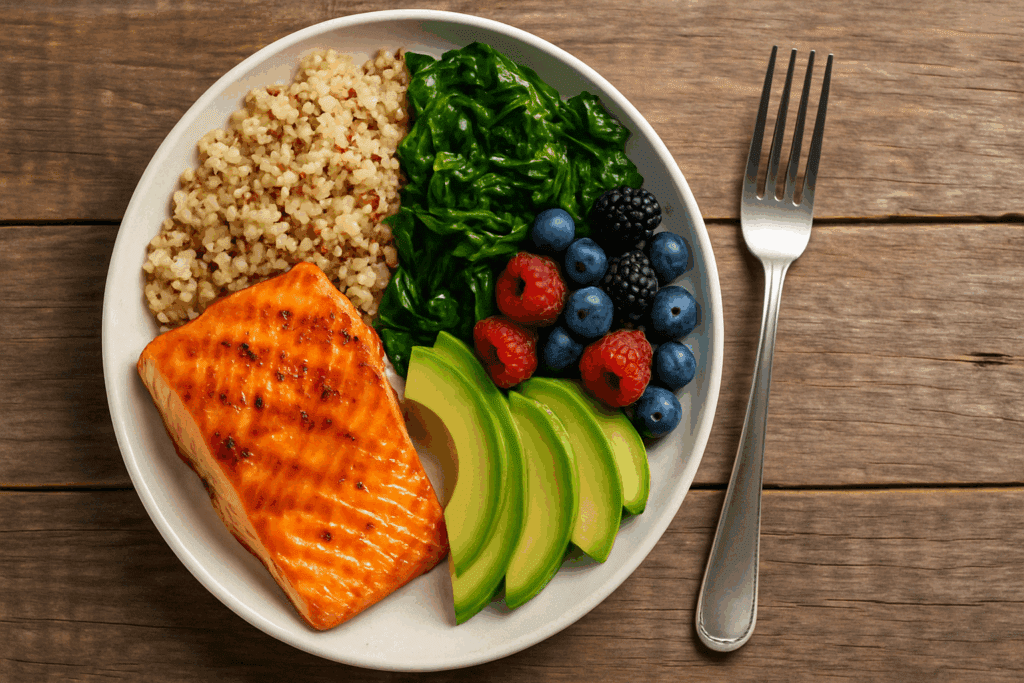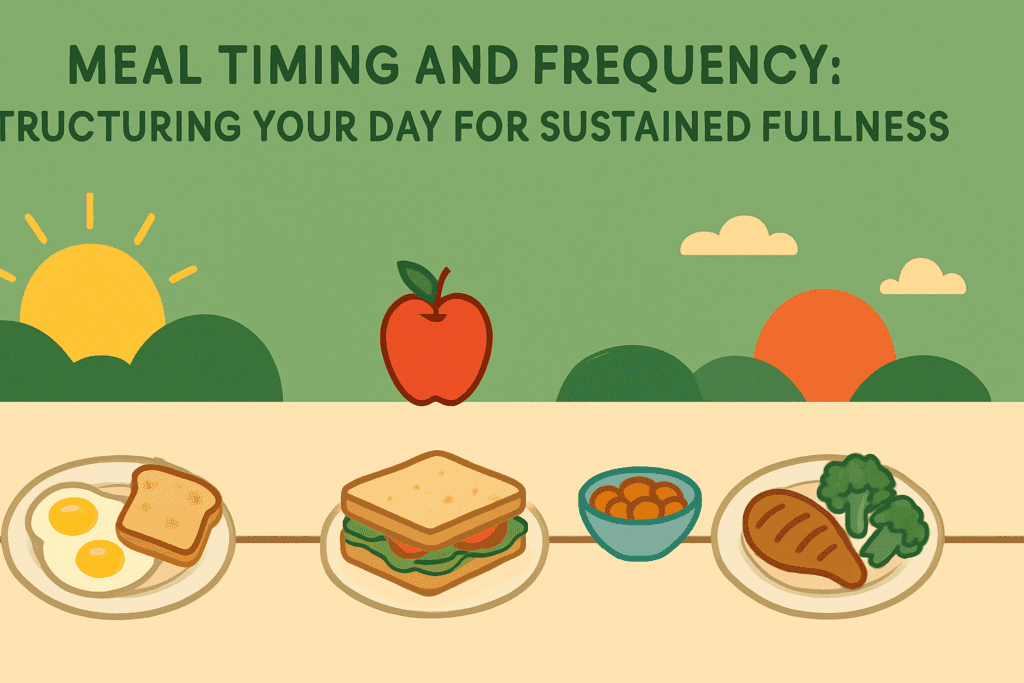Understanding Why You Still Feel Hungry After Eating
For many people striving to lead a healthier lifestyle, one of the most frustrating obstacles is persistent hunger even after a full meal. This phenomenon can be puzzling and discouraging, especially when one believes they’ve eaten adequately. The truth is, hunger is not solely dictated by the quantity of food consumed. Multiple physiological, psychological, and behavioral factors interact to influence our perception of satiety. Hormones like ghrelin and leptin play a vital role, with ghrelin stimulating hunger and leptin signaling fullness. When these hormonal signals are disrupted—often due to poor sleep, chronic stress, or unbalanced eating patterns—individuals may find themselves constantly craving food regardless of how much they eat.
You may also like: How to Stop Emotional Eating and Regain Control: Mindful Nutrition Strategies That Support a Healthier Lifestyle
Moreover, the composition of your meals matters significantly. A plate filled with refined carbohydrates and lacking in protein, fiber, and healthy fats may leave you feeling unsatisfied shortly after eating. These empty-calorie foods can cause rapid spikes in blood sugar followed by crashes that reignite hunger. Psychological conditioning also plays a powerful role. If you’ve developed the habit of eating while watching TV or working at your desk, your brain may not fully register the act of eating, reducing the sensation of being full. To truly understand how to stop feeling hungry after eating, one must look beyond simple calorie counts and consider the broader landscape of human behavior and biology.

Nutrient-Dense Meals: The Foundation of Satiety
A primary and often overlooked solution to post-meal hunger is the quality of the food consumed. Nutrient-dense meals—those rich in essential vitamins, minerals, fiber, and macronutrients—are key to keeping you full and energized for longer periods. High-quality proteins such as lean meats, legumes, tofu, or eggs are particularly effective in enhancing satiety. Protein stimulates the production of satiety hormones like peptide YY and reduces the secretion of ghrelin. Including adequate protein in every meal has been shown in clinical studies to significantly curb cravings and delay the return of hunger.
Fiber is another crucial component. Found in vegetables, fruits, whole grains, and legumes, fiber slows digestion and extends the time food spends in your stomach, which helps you feel fuller for longer. Complex carbohydrates, unlike their refined counterparts, are absorbed more slowly and help maintain steady blood sugar levels. Healthy fats, such as those from avocados, nuts, seeds, and olive oil, also contribute to a feeling of fullness and satisfaction. Combining these elements into a balanced meal can dramatically reduce the urge to snack or overeat later in the day. If you’re wondering how to stop feeling hungry after eating, start by examining the composition of your meals and prioritizing nutrients that support sustained satiety.

The Role of Hydration in Managing Hunger Cues
Hydration is often the unsung hero in discussions about appetite regulation. Many individuals mistake thirst for hunger, leading them to consume extra calories when their body is actually craving water. Staying well-hydrated supports digestion, nutrient absorption, and proper metabolic function. Even mild dehydration can interfere with the brain’s ability to accurately interpret hunger signals. This confusion between hunger and thirst is particularly common during times of stress or distraction, when mindfulness around bodily cues may be compromised.
To support hydration, aim to drink water consistently throughout the day, not just when you feel thirsty. Incorporating hydrating foods like cucumbers, watermelon, oranges, and leafy greens can also help maintain optimal fluid levels. Starting meals with a glass of water has been shown to reduce overall caloric intake and improve feelings of fullness. If you frequently find yourself feeling hungry soon after eating, consider whether inadequate hydration might be part of the equation. Developing the habit of reaching for water before reaching for a snack can help you better understand how to ignore hunger that isn’t genuine, ultimately supporting a more mindful approach to eating.

The Science of Mindful Eating and Appetite Control
Mindful eating is an evidence-based approach that encourages individuals to slow down and pay full attention to their food and bodily sensations during meals. This practice has been linked to reduced overeating, improved digestion, and greater satisfaction with smaller portions. When you eat mindfully, you become more attuned to your internal hunger and fullness cues, which can prevent the common pitfall of eating out of boredom, stress, or habit. Research in nutrition and behavioral science consistently supports the idea that people who eat slowly and without distraction report feeling fuller and consume fewer calories.
One of the most effective techniques for mindful eating involves chewing slowly and putting down utensils between bites. This simple act increases the amount of time it takes to finish a meal, giving your body ample opportunity to register satiety signals. Another strategy is to engage all your senses during meals—notice the texture, aroma, and flavor of each bite. This sensory engagement enhances enjoyment and reduces the desire for excess consumption. For those seeking to learn how to stop feeling hungry after eating, embracing the principles of mindful eating may offer a long-term, sustainable solution.

Sleep, Stress, and Hormonal Balance: Hidden Drivers of Cravings
It’s easy to overlook how lifestyle factors outside the kitchen can influence eating behavior, but the connection between sleep, stress, and hunger is both profound and well-documented. Sleep deprivation disrupts hormonal regulation, particularly affecting leptin and ghrelin, the two primary hormones involved in hunger signaling. With less sleep, ghrelin levels increase and leptin levels drop, creating a perfect storm for intense hunger and poor impulse control around food. Chronic sleep deprivation has been associated with greater cravings for calorie-dense, carbohydrate-rich foods, further fueling cycles of overconsumption.
Stress has a similarly powerful impact on appetite. The release of cortisol during periods of emotional or physical stress can heighten hunger signals and reduce satiety responses. This phenomenon, often called “stress eating,” is rooted in biology but exacerbated by learned behaviors and emotional coping mechanisms. Understanding how to ignore hunger that’s driven by stress or fatigue requires awareness and proactive lifestyle management. Techniques such as deep breathing, regular physical activity, and cognitive-behavioral therapy can help mitigate these hormonal fluctuations and support healthier, more intuitive eating habits.

Emotional Eating vs. Genuine Hunger: Knowing the Difference
One of the more complex challenges in learning how to stop feeling hungry after eating is distinguishing between true physiological hunger and emotionally driven urges to eat. Emotional eating is a common but often unconscious behavior that arises in response to feelings of boredom, sadness, loneliness, or anxiety. Unlike physical hunger, which builds gradually and is satisfied by eating a variety of foods, emotional hunger tends to come on suddenly and often involves cravings for specific comfort foods—usually high in sugar, salt, or fat.
The key to managing emotional eating lies in developing greater self-awareness and practicing emotional regulation techniques. Journaling, meditating, or even taking a short walk can help you pause and assess whether you’re truly hungry or simply responding to emotional discomfort. Asking yourself questions like “When did I last eat?” or “Would I be satisfied with a healthy option like an apple?” can clarify the nature of your hunger. By learning to differentiate emotional signals from physiological ones, you empower yourself to make more intentional choices and reduce the tendency to eat when your body doesn’t actually need food. This is an essential component of understanding how to ignore hunger that isn’t rooted in actual physical need.
Meal Timing and Frequency: Structuring Your Day for Sustained Fullness
When and how often you eat can be just as important as what you eat when it comes to managing hunger. Some individuals benefit from three balanced meals a day, while others may find that smaller, more frequent meals help keep hunger at bay. The key is to find a rhythm that aligns with your body’s natural energy fluctuations and supports consistent nutrient intake. Skipping meals or waiting too long between eating opportunities can lead to blood sugar crashes and intense cravings, setting the stage for overeating.
Breakfast in particular plays a vital role in appetite regulation throughout the day. A morning meal that includes protein, fiber, and healthy fats can set a stable metabolic tone and reduce the likelihood of mid-morning hunger. Similarly, spacing meals every 3 to 5 hours can help maintain blood glucose levels and prevent energy dips that trigger unnecessary snacking. If you’re seeking solutions for how to stop feeling hungry after eating, assessing your meal schedule may reveal areas for improvement that support longer-lasting satiety.

Gut Health and Hunger: The Microbiome’s Role in Craving Control
Emerging research in gut health has revealed compelling connections between the microbiome and hunger regulation. The gut is home to trillions of microbes that influence digestion, nutrient absorption, immune function, and even mood. Some of these microbes produce short-chain fatty acids and neurotransmitters that directly affect appetite-regulating hormones and brain chemistry. A diverse and balanced gut microbiota has been associated with better appetite control, improved mood, and reduced risk of overeating.
Diet plays a significant role in shaping the microbiome. Fermented foods like yogurt, kimchi, and kefir provide beneficial probiotics, while prebiotic-rich foods such as garlic, onions, bananas, and oats feed the good bacteria already present in the gut. Fiber also promotes microbial diversity and supports gut-brain communication via the vagus nerve. When your gut is healthy, it sends clearer signals to your brain, helping you better interpret hunger and fullness cues. This can be especially helpful for those exploring how to ignore hunger that stems from gut dysbiosis or poor digestion. Supporting your gut health may be a foundational step toward sustainable appetite management.

Strategic Snacking and Portion Awareness
While snacking often gets a bad rap in diet culture, strategic snacking can be a valuable tool for managing hunger between meals and preventing overindulgence later. The key lies in choosing snacks that contribute to your nutritional needs rather than simply satisfying cravings. A handful of almonds, Greek yogurt with berries, or sliced vegetables with hummus can provide lasting energy and curb hunger effectively. These options deliver a balance of macronutrients that support fullness and prevent the blood sugar spikes and crashes associated with sugary or processed snacks.
Portion control is equally important. Even healthy snacks can contribute to excess calorie intake if consumed mindlessly or in large quantities. Using small plates, measuring servings, and avoiding eating directly from the package can help maintain awareness around how much you’re consuming. Mindful snacking not only curbs cravings but reinforces better eating habits throughout the day. Understanding how to stop feeling hungry after eating includes being intentional about your food choices even outside of main meals.
Frequently Asked Questions: Hunger, Cravings, and Sustainable Fullness
What are some unexpected reasons you might feel hungry shortly after a meal?
One overlooked reason people feel hungry after eating is sensory-specific satiety. When meals lack variety in texture, flavor, or temperature, the brain may not register satisfaction, prompting cravings soon after eating. Additionally, digestive inefficiencies—such as low stomach acid or enzyme deficiencies—can prevent the body from fully absorbing nutrients, creating lingering hunger cues. For those seeking how to stop feeling hungry after eating, addressing gut function through testing or consultation with a registered dietitian may reveal underlying metabolic or digestive issues. Even environmental triggers, like constant food-related advertisements or the smell of food, can override satiety signals and create the illusion of hunger. Recognizing these subtle contributors is key to regaining control over appetite.
Can visual food exposure increase hunger even if you’re physically full?
Yes, visual stimulation plays a powerful role in appetite signaling. Neuroscientific research shows that just seeing images of food activates reward pathways in the brain, often triggering desire regardless of actual need. In today’s digital world, scrolling through food content on social media can increase salivation and override fullness cues. If you’re actively learning how to ignore hunger that stems from visual triggers, it helps to limit exposure to food-related media when not planning to eat. Practicing digital mindfulness—such as muting certain hashtags or unfollowing food-heavy accounts—can reduce unnecessary cravings. This simple behavioral adjustment can strengthen your internal hunger regulation over time.
How does social context influence post-meal hunger and eating behavior?
Social dining environments can unconsciously shape how much we eat and how we perceive hunger. People tend to mirror the eating pace and portion sizes of those around them, often eating more or faster than they would alone. When meals are consumed with others who continue eating after you’re full, it can blur internal signals of satiety. If you’re working on how to stop feeling hungry after eating in social settings, consider taking pauses to check in with your body or eating mindfully regardless of others’ behavior. Dining in more intentional, distraction-free environments periodically can help recalibrate these social influences. Understanding the psychology of group eating empowers you to make more autonomous food choices.
Are there any emerging technologies or tools that help regulate hunger more effectively?
Wearable health technology is evolving to help users track patterns in hunger, hydration, and sleep, which all contribute to appetite control. Smart rings and watches can now monitor sleep quality, heart rate variability, and stress levels—data that can help interpret why hunger might be elevated. These insights are particularly valuable for people exploring how to ignore hunger that is hormonally or emotionally driven. New apps also offer biofeedback-based breathing exercises designed to reduce cortisol before meals, improving digestion and satiety. Incorporating technology into your wellness routine can add personalized insights and increase accountability in managing cravings.
What role does cognitive behavioral therapy (CBT) play in reducing chronic hunger cues?
CBT can be a transformative tool in reshaping how we interpret hunger and respond to cravings. It helps reframe unhelpful thought patterns, such as associating hunger with anxiety or boredom, and replaces them with healthier behavioral alternatives. CBT also emphasizes structured journaling techniques that distinguish between emotional urges and physical hunger, a critical step for those figuring out how to stop feeling hungry after eating. Through consistent practice, individuals learn to tolerate discomfort without turning to food, improving long-term resilience. Therapists trained in mindful or intuitive eating often incorporate CBT principles for a more holistic approach.
Can the order in which you eat your food affect how full you feel?
Yes, meal sequencing has been shown to influence fullness and glycemic response. Research suggests that starting a meal with fiber-rich vegetables or a small salad can slow glucose absorption and reduce post-meal insulin spikes, which play a role in hunger rebound. Following with protein and healthy fats before consuming carbohydrates may extend satiety and reduce the urge to snack later. If you’re unsure how to stop feeling hungry after eating even with adequate portions, adjusting food order could offer surprising results. This simple strategy can be particularly helpful for individuals with insulin resistance or metabolic concerns.
Is it ever helpful to intentionally ignore hunger cues?
In specific contexts, yes—but it requires discernment. Short-term hunger, such as during a fast or before a workout, can sometimes be ignored safely, especially if it’s not accompanied by fatigue or irritability. For those exploring how to ignore hunger during moments of emotional stress, it’s often more productive to redirect attention to non-food coping tools like movement, creativity, or connection. However, consistently ignoring physical hunger can backfire by disrupting hormonal regulation and encouraging binge eating later. The goal is not to silence hunger but to interpret it accurately and respond in a way that aligns with your physical and emotional needs.
How do gut bacteria impact how full or hungry you feel?
Your gut microbiome plays a vital role in regulating satiety hormones such as GLP-1 and PYY. Certain strains of gut bacteria can increase short-chain fatty acid production, which directly influences the brain’s appetite centers. An imbalance in gut flora—often caused by excessive sugar, low fiber, or frequent antibiotic use—can lead to exaggerated hunger signals. People trying to learn how to stop feeling hungry after eating often benefit from incorporating probiotic-rich foods and prebiotic fibers to improve microbial balance. Advances in microbiome testing now allow for personalized gut health plans that can fine-tune satiety signaling based on your unique bacterial profile.
Are there specific mindfulness exercises that reduce persistent hunger?
Yes, and they extend far beyond mindful chewing. Body scans, diaphragmatic breathing, and guided imagery are increasingly used to recalibrate the nervous system, which influences appetite and digestion. Practicing a brief mindfulness ritual before meals—such as taking three deep breaths and expressing gratitude—can anchor your awareness and reduce impulsive eating. For individuals wondering how to ignore hunger that’s rooted in anxiety or habit, mindfulness offers a reset button. These exercises help activate the parasympathetic nervous system, which supports better nutrient absorption and reduces the need for volume-based fullness. When practiced regularly, mindfulness becomes a powerful ally in appetite control.
What long-term mindset shifts support sustainable appetite regulation?
One of the most impactful shifts is viewing hunger not as an enemy, but as a messenger. When you stop labeling hunger as failure or lack of discipline, it becomes easier to respond to it with curiosity rather than judgment. Individuals committed to learning how to stop feeling hungry after eating often find success by embracing flexibility rather than rigid control. They allow room for hunger on some days and fullness on others without shame, which fosters a sustainable relationship with food. Ultimately, appetite regulation becomes less about suppression and more about respectful dialogue between the body and mind.
Conclusion: Rethinking Hunger to Support a Healthier Lifestyle
In today’s fast-paced, food-abundant environment, managing hunger requires more than willpower—it demands understanding. By exploring the physiological, psychological, and environmental factors that drive cravings, individuals can develop effective strategies to promote lasting satiety and reduce unnecessary food intake. Whether through nutrient-dense meals, improved hydration, mindful eating, or addressing emotional triggers, learning how to stop feeling hungry after eating is both achievable and empowering.
Moreover, recognizing how to ignore hunger when it doesn’t stem from genuine need allows for a more harmonious relationship with food. By listening to your body’s signals, supporting gut health, and adopting consistent eating routines, you can cultivate habits that enhance wellness without deprivation. These strategies do more than help you feel full—they foster long-term health, energy, and resilience in a world filled with dietary distractions. With knowledge, intention, and consistent practice, you can redefine your hunger cues and take meaningful steps toward a healthier lifestyle that truly satisfies.
Was this article helpful? Don’t let it stop with you. Share it right now with someone who needs to see it—whether it’s a friend, a colleague, or your whole network. And if staying ahead on this topic matters to you, subscribe to this publication for the most up-to-date information. You’ll get the latest insights delivered straight to you—no searching, no missing out.
Further Reading:
17 reasons for always feeling hungry

